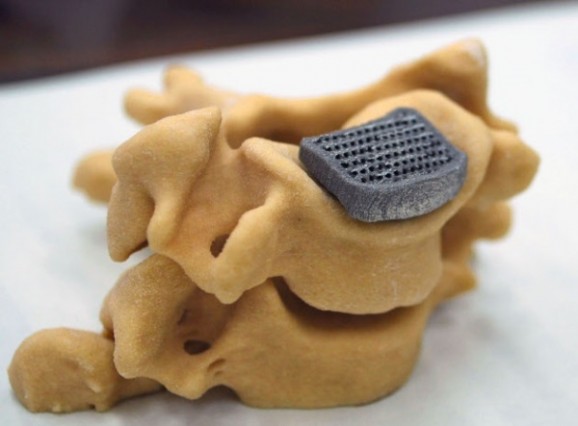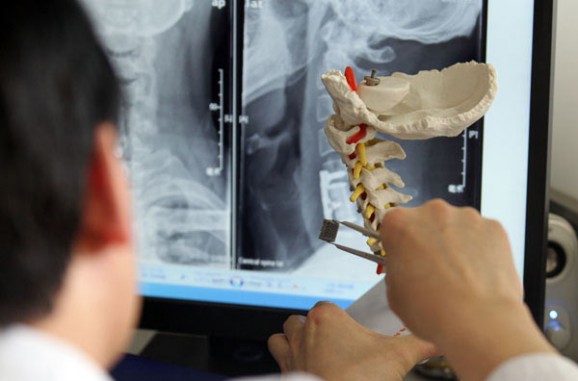UK Dental Lab Will 3D Print Spinal Implants
This article is more than 2 years old
 Attenborough Dental, a UK-based digital dental laboratory that has been in the business for over 100 years, will soon be expanding its services to include 3D-printed spinal implants.
Attenborough Dental, a UK-based digital dental laboratory that has been in the business for over 100 years, will soon be expanding its services to include 3D-printed spinal implants.
The dental lab, one of the largest in Europe, with 20 offices around the globe, already uses 3D printing for dentistry, but recognize the benefits available by incorporating the technology into orthopedics. They’ll start with custom-printed spinal implants and move on to 3D-printed knees and hips if all goes well.
Conventional spinal implants are “one size fits all,” which produces imperfect results, as patients’ bodies have to try and adapt to the implant rather than the other way around. Attenborough Dental’s plan is to conduct 3D scans of patients to obtain a clear image of the damage sustained to the spine. Then they’ll merge an implant into the scan and produce a 3D model. They have both a 3D-scanning center and a 3D-printing and manufacturing center in their Nottingham location, as well as titanium, zirconia, and other ceramics for printing. Finally, they’ll print the customized implant for the patient. Within the next 18 months, Attenborough Dental plans to try this process with 24 patients.

The revolutionary procedure comes on the heels of successful 3D-printed spinal implant trials conducted by Peking University Third Hospital in Beijing, China. The hospital has implanted 3D-printed titanium spinal implants in over 50 patients. The results have been successful: “All the patients recover very well. Nobody seems to have any undesirable side effects or adverse reaction,” says Dr. Liu Zhongjun, the project lead. According to Zhongjun, in addition to being specific to a patient’s spine, the porous metal composition of the implants is a reason for its success because it allows the bone to merge with the implant in a way that reduces pressure on the bone. Dr. Zhongjun first developed the implants in 2009 and began testing them on sheep in 2010.
Cornell University has also conducted trials with 3D-printed spinal implants, though instead of using titanium, they use scaffolds and patients’ own stem cells to help combat disc degeneration. The list of body parts that can’t be 3D printed grows ever smaller, and a trip to the dentist has become more high-tech than most of us ever would have imagined. I wonder what kind of reward candy Attenborough hands out after this procedure.












